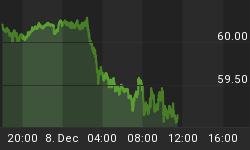On November 8, 2010, our composite indicator that looks at the trends in gold, crude oil and yields on the 10 year Treasury registered an extreme value. At that time, I wrote: "A strategy that combines this "fundamental" filter with the 40 week moving average has given a sell signal." With rising Treasury yields and persistence in the trends in gold and crude oil, the composite indicator remains in the extreme zone. This is not the time to buy equities. For those keeping a scorecard at home and for those who are buying the bullish nonsense, the S&P500 has gained about 1% over the last 5 weeks.
See figure 1, a weekly chart of the S&P500 with the indicator in the lower panel. Inflationary pressures are extreme (as are the trends in crude oil, gold and yields on the 10 year Treasury) and this is a headwind for equities. I have discussed this indicator and a trading model that utilizes the indicator at great length in the following articles:
Developing A Trading Strategy (Part 1)
Developing A Trading Strategy (Part 2)
Developing A Trading Strategy (Part 3)
Figure 1. $INX/ inflatonary pressures
















